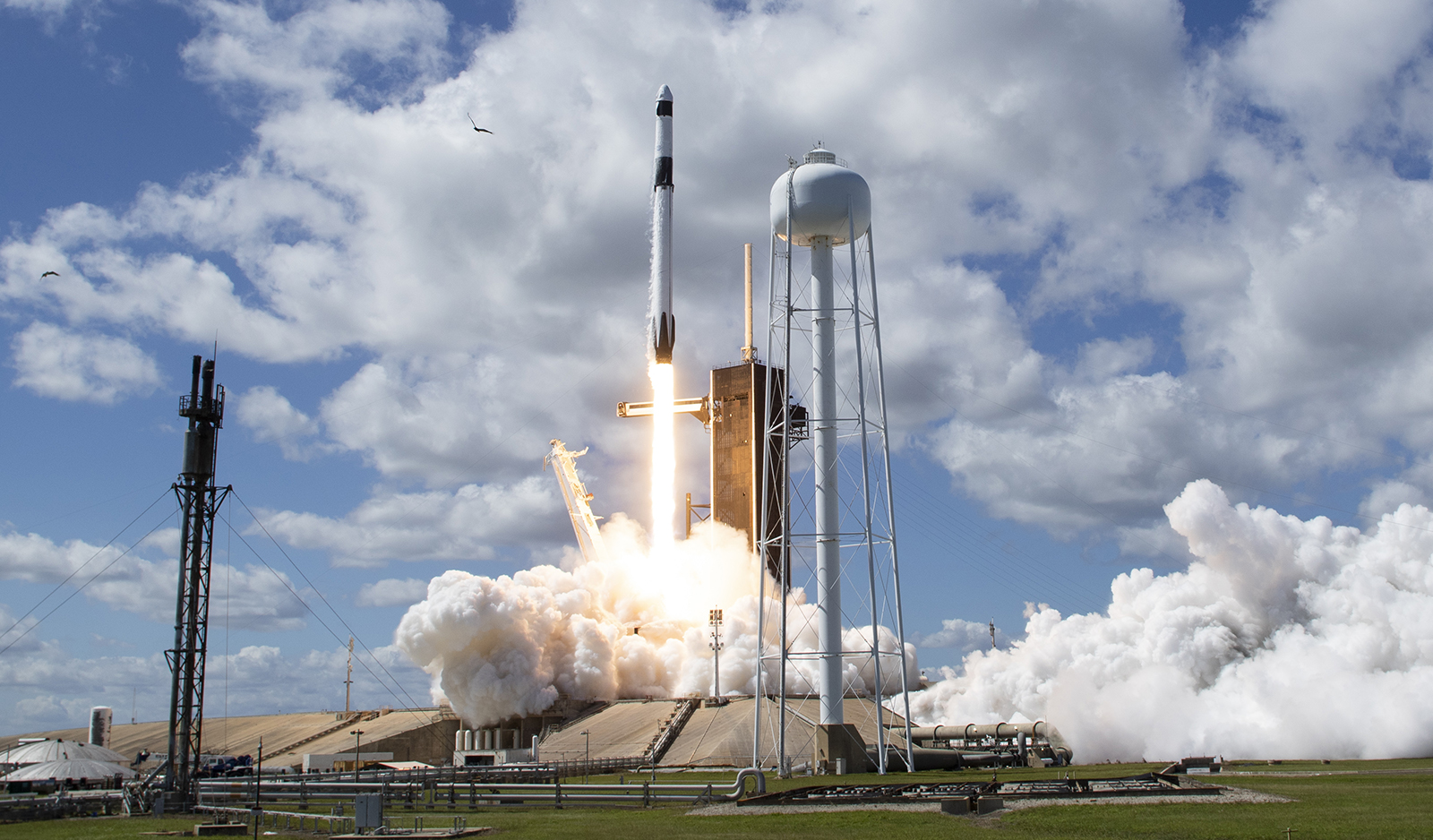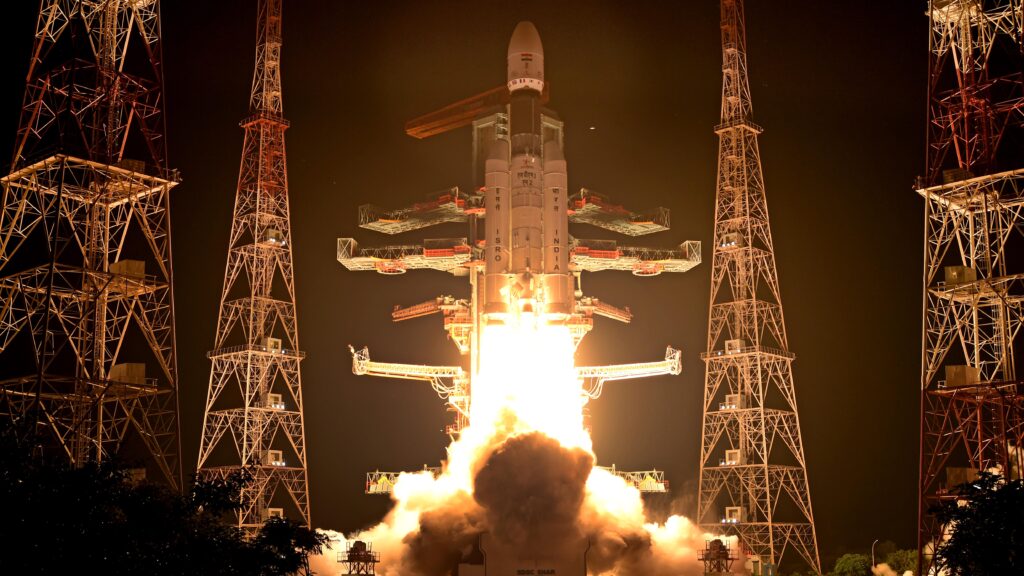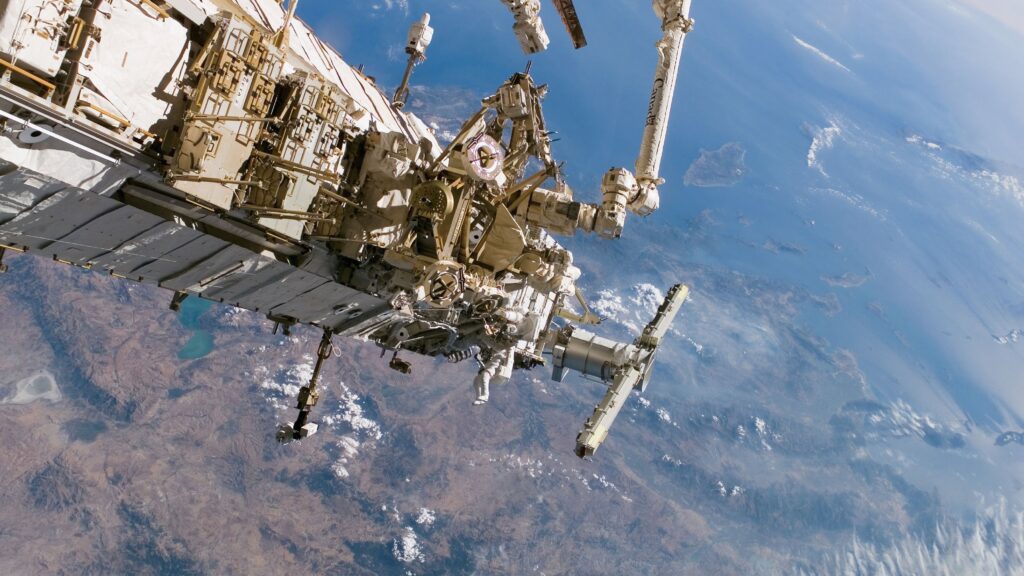What Does 2023 Hold for Space Exploration?

A SpaceX Falcon 9 rocket is launched at NASA's Kennedy Space Center on Oct. 05, 2022, in Cape Canaveral, Florida. NASA's SpaceX Crew-5 mission to the International Space Station is part of the agency's Commercial Crew Program.
Photo: Joel Kowsky/NASA via Getty Images
The key space developments in 2023 with grand strategic implications revolve around space resource utilization missions, space-based solar power (SBSP), space launch systems, asteroid exploration, space telescopes, and in-space manufacturing and assembly.
Exploiting Space Resources
The Hakuta R mission, launched on December 11, 2022, by the Japanese company i-space on a Falcon 9 rocket will become the first commercial company to land on the Moon by April 2023. This is a space resources mission that will attempt to extract resources on the Moon and then sell it to NASA as a proof of concept.
Japan became the first country in the world in 2022 to grant a license to i-space to extract and keep the resources of the Moon, supported by its space mining legislation passed in December 2021. In a similar theme, NASA’s planned mission in October 2023 to study the metallic asteroid 16 Psyche is an important mission from a space resources perspective. According to estimates, 16 Psyche is rich in resources like nickel, gold and iron ore, worth $10 quintillion. Given the changing discourse of space, from purely exploration missions to space utilization missions, this mission could have a strategic impact globally.
As part of Commercial Lunar Payload Services (CLPS), the Peregrine lunar lander, built by Astrobotic, will launch in September 2023. Astrobotic will deliver 11 payloads to Lacus Mortis, a larger crater on the near side of the Moon. Intuitive Machines plans to deliver five payloads to Mare Crisium, a dark spot on the Moon, and launch NASA’s PRIME-1 drill to the Moon.
Masten Space Systems (now acquired by Astrobotic) plans to deliver and operate eight payloads — with nine science and technology instruments — to the lunar South Pole. For China, 2023 is the year of preparation for its 2024 Chang’e-6 mission, which plans to land on the south pole of the Moon and bring back samples to analyze for potential future lunar resourcing.
India and Japan plan to collaboratively launch the Chandrayaan 3 to the lunar far side by mid 2023. This will be an exciting mission for space resource utilization. India plans to build the lander and the rover, and Japan will provide the rocket that will land the probe on the lunar south pole. The Indian Space Research Organisation is aiming to send the rover to explore the Permanently Shadowed Regions to scout for lunar resources.
Space-Based Solar Power
A technology like SBSP is getting traction with the European Space Agency investing in feasibility studies in 2023, as well as Caltech launching its Space Solar Power Project (SSPP). In a statement, Caltech specified that “The SSPP has developed technology-demonstrating prototypes that convert sunlight to radio-frequency microwave energy, then transmit this usable power wirelessly in a steerable beam. The project plans to perform its first space test of such gear in early 2023.”
China will be completing the construction of its permanent space station, the Tiangong. The Tiangong space station plans to test China’s space assembly of its SBSP satellite and demonstrate power beaming, a key for the successful transmission of solar energy from space. If successful, this will be a game changer and will result in the 2028 Chinese ambition to demonstrate a kilowatt-level power beaming from Low Earth Orbit (LEO).
The one technology that will change the ‘game of space’ and make space access affordable is a heavy lift rocket that is fully reusable.
Fully Reusable Rockets
The one technology that will change the “game of space” and make space access affordable is a heavy lift rocket that is fully reusable. In 2022, China made reusability a priority in the development of its Long March 9 heavy lift rocket, capable of lifting 140 metric tons to LEO by 2030.
SpaceX Starship is the rocket to watch in 2023, when the company plans to carry out tests. With an ability to lift 100 metric tons to LEO, with lower and upper stages reusable, and a rocket that can be refueled in space, Starship, if successful, will offer the U.S. and the world space launch capacity never seen before. Starship is the rocket that can reach Mars, and Elon Musk has expressed ambitions to develop a city on Mars by 2075 by utilizing this particular rocket.
SpaceX’s development of the Falcon 9 and the Falcon Heavy with first-stage reusability offered the U.S. its own capacity to launch to the International Space Station in 2020, so far dependent on Russia’s Soyuz rockets. Starship will scale up that launch capacity manifold.
SpaceX also claims that it will be able to reach 100 launches per year in 2023, with several aimed at launching SpaceX’s Starlink internet constellation. Another rocket to watch will be Terran1 built by Relativity Space, the first 3D printed rocket, set to launch in mid 2023. The company intends to make its rockets reusable in the future. Blue Origin intends to launch its first-stage reusable rocket, New Glenn.
Space Telescopes and Asteroid Exploration
China will be launching its space telescope Xuntian, to map stars and supermassive black holes with a resolution equivalent to the Hubble Space Telescope. China will also launch its New Horizon Program, called the Strategic Prioritization Program, with missions planned to study exoplanets, specifically focused on discovering Earth-like habitable planets in other solar systems.
Another mission to watch is China’s asteroid exploration mission called Zheng He (named after the 15th century Chinese sea explorer and admiral). Russia is partnering with China on this asteroid exploration mission. India plans to conduct a test flight for its human spaceflight program, Gaganyaan, as a robotic mission followed by a human mission in 2024 to Low Earth Orbit (LEO). India recently announced that its human spaceflight program to LEO is aimed at developing its space tourism sector.
The Military Sphere
In the military sphere, 2023 will witness the adherence of several nations to the U.S.-led effort toward an anti-satellite (ASAT) ban at the United Nations. Both China and Russia voted against the U.N. General Assembly resolution supporting an ASAT ban.
The resolution is, of course, non-binding, not requiring countries to halt any such tests. Instead, it calls for refraining from such tests. Military space forces of the U.S., China, India and Japan will witness organizational changes to their culture, procurements, as well as spread of bases and locations. China’s People’s Liberation Army Strategic Support Force will organize, train and equip for a Taiwan scenario, which will witness the development of their counter-space capacities and the inclusion of U.S. private space companies, like SpaceX’s Starlink, in that strategic mapping. Russia will continue to improve its counter space capabilities, including its ASAT capability.
These developments follow the critical importance of space to a nation’s grand strategic thinking and position that was evident in 2022 with the U.S.’s successful launch of its Space Launch System (SLS) and how that mattered to its self-image as a spacepower. China pointed out that in its development of its comprehensive national power, space is a key strategic technology.
Consequently, the ability of a nation to control access to Space (space launch and presence), by domination of strategic chokepoints in LEO and cislunar space (the space between the Earth and Moon), development of space resource utilization and in space manufacturing capabilities is vital. The U.S. has invested a lot of its resources on the Artemis Lunar Program from a space resource utilization perspective and by building international partnerships. China is establishing a strategic partnership with Russia for space development to include a lunar research base, asteroid exploration missions and planetary defense.






